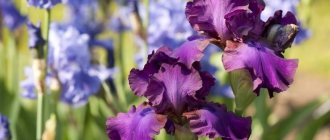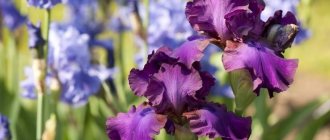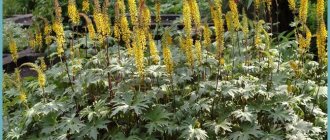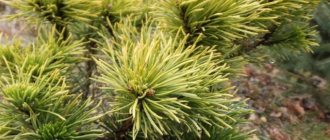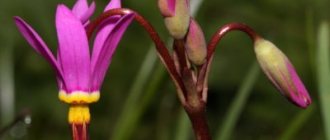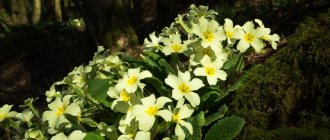Daylily is a fairly commonly used plant in landscape design. This is due to a number of its positive characteristics, the ability to combine with other plants and create magnificent combinations in the landscape of a summer cottage and a country house.
Daylily is one of those flowers that will decorate any garden for a long time, and without much labor.
Use in landscape design
Daylilies are a perennial crop, so when planting them, you need to carefully consider the planting location and combination with other plants. At the same time, the large varietal diversity of this flower makes it possible to achieve a variety of effects in your flowerbed. Therefore, it is worth getting to know this ornamental plant better.
Daylilies are so versatile that they can be used in a wide variety of garden arrangements.
Daylily is a herbaceous crop that grows in one planting site for several years. Belongs to the lily family and is native to the eastern regions of Asia.
One daylily flower is short-lived, but new buds bloom to replace the fading ones
When daylilies fade, their foliage also plays a role in the design of the site
The features of this type of plant are as follows:
- Unpretentiousness, which makes flower beds with daylilies an ideal solution for garden plots where it is not possible to devote a large amount of time to planting.
- To achieve maximum effect and not spend a lot of time and effort, you should choose varieties that were bred quite a long time ago. In this case, there is a high probability of plant resistance to many negative conditions.
Varieties of different colors react differently to sunlight
- The flowers are funnel-shaped and located in the upper part of the plant. Their colors can be very diverse and not only monochromatic, but combine several shades at once. But still, the most common colors are orange, brown, red and yellow in the color of the petals.
- From 1 to 3 flowers bloom on one plant at the same time.
- When arranging a landscape design with daylilies, you first need to pay attention to the timing of their flowering. You can select early, middle and late varieties, simultaneously achieving the transition of flowering from one plant to another.
The flowering time of daylilies varies depending on the species - from April to July
The plant tolerates winter quite well if there is snow cover. In this case, it does not require additional shelter.
How to plant daylilies in spring
Before transferring the seedlings to the garden, they need to be prepared for planting:
- Daylily cuttings are inspected and damaged, dry or rotten roots are removed.
- The sections are treated with charcoal or activated carbon crushed to a powder consistency.
- If this has not been done earlier, the foliage is cut 10–15 cm above the base of the leaf blades.
Often, planting material purchased in a store has dried out by the time the daylily is planted in open ground, and caring for such a plant begins with soaking the root system in a growth stimulator for 4 hours.
The location has been chosen, the planting material is waiting to be transferred to the ground. All that remains is to prepare soil suitable for daylilies and begin planting. Ornamental perennials prefer a loose, light substrate with a neutral or slightly acidic reaction.
Before planting daylilies in the spring, the soil at their future place of residence must be dug up with a shovel full. Next, make a planting hole large enough to accommodate the rhizomes. For more convenience:
- a cone of loosened substrate is poured at the bottom;
- a plant is placed on top of the soil;
- carefully lay out the rhizomes on the soil;
- sprinkle the underground part of the daylily with soil so that the root collar does not sink more than a couple of centimeters.
After planting is completed, the soil around is compacted a little and the daylily is watered.
To reduce moisture evaporation, the soil under the plants can be mulched using any available means, for example, rotted bark or pine needles, straw or specialized material.
Varieties and varieties of daylilies
Daylilies, in addition to their flowering period, can also be divided into:
- Wild.
- Hybrid varieties. These, in turn, are divided into partially evergreen, evergreen and dormant subspecies.
According to the shape of the flowers there are:
- Simple rounded.
- Star-shaped.
- Triangular shape.
- Insect-like with thin leaves.
- Terry, that is, having several layers of petals.
Terry daylily variety Roswitha
- Fringed - those that have an uneven edge dotted with small slits.
Angel of Light daylily with ruffled petals
According to the color scheme we can distinguish:
- Plain. There are 18 primary colors here, with the possible exception of blue shades.
- With mixed colors. The most popular and spectacular varieties are those with the names “Orange”, “Yellow”, “Dumortier”, “Heucher”.
Variety Cool It
Variety Frans Halls
Variety King of Hearts
Japanese variety Kwanzo
Variety Radiant Greetings
Variety “Viking Magic”
Design for placing a flower bed made of only daylilies
And yet, many landscape designers advise using daylilies as one separate type of ornamental plant, combining them with green spaces or simple lawn grass. In this case, landscape design has the following advantages:
- Despite its brevity, it looks quite elegant and stylish.
- Thanks to the simultaneous planting of different varieties of daylilies, it is possible to achieve flowering from mid-May to mid-autumn, especially in the southern regions. Naturally, in the central zone and northern parts of Russia this period will be somewhat shorter. But this will be no less effective.
- It should be borne in mind that with the help of daylilies you can create entire hedges that look impressive when placed along fences or garden paths.
With the help of these plants you can shade individual small garden architectural forms. And in this case, these flowers will create a stylish space.
Flowerbeds with daylilies fit perfectly into the landscape style of a suburban area.
The combination of this plant with green lawn grass can be used in classic English landscape design.
Flowerbed with daylilies and other beautifully flowering plants
And if you combine daylily with the water surface of an artificial pond or rocky slides, you can form a Japanese-style garden.
Daylilies look luxurious near the water
With all this, when choosing a specific variety, do not forget that the plant needs to create suitable conditions for growth and development. Only in this case can maximum decorativeness be achieved. But in relation to the daylily, you need to put in very little effort, because this flower itself is a little whimsical.
Daylilies of different varieties can beautifully decorate a garden path
To make sure what colors daylilies are combined with in garden design, photos with different types of landscape design will help with this.
Combination with other plants
Let's find out how to best combine daylilies with other flowers.
With round or star-shaped buds
If this is the variety you have, it is best to combine it with plants that have pyramidal or spherical buds.
With green core
It is worth paying attention to the color of daylilies. If the buds have a greenish core, they will look most attractive in combination with flowers of contrasting and bright shades. After all, green is the main color of foliage.
With yellow core
If you planted varieties with a bright yellow center, carefully consider the choice of their “neighbors”. A combination of similar colors with yellow hostas will look advantageous.
Red daylilies
Be careful when combining red petal daylilies with other flowers. It is best to plant the variety among yellow plants: such a combination will look picturesque, bright and fresh.
Raspberry, lilac and pink
Daylilies of these beautiful colors look great against the background of geraniums, astilbes and monardas. It is better to choose tall plants.
Dark varieties
If your daylilies have dark buds, plant them against a backdrop of plants such as turf or bladderwort. The light coloring of these plants will prevent the composition from becoming too gloomy.
Buds of warm colors
If you are planting yellow or orange daylilies, place them in a flowerbed with blue flowers: delphiniums, cornflowers, bluebells. The combination of yellow and blue always looks advantageous and very fresh. You can also plant warm-colored daylilies with white flowers: astilbe, daisies, phlox.
Bright and colorful
It is recommended to plant such varieties against a background of monochromatic plants: conifers are perfect for this purpose. Flowers in greenish, salmon, white and soft pink shades will also look good with similar varieties.
With phlox
The combination of daylilies and phlox is often used by landscape designers when designing plots. Phloxes in lilac, pink and white shades look especially good against the backdrop of gorgeous daylilies. Note that these plants bloom at approximately the same time, which makes their combination even more advantageous.
With agapanthus
Daylilies of warm and dark shades go well with this unusual plant: yellow, orange, burgundy, brown. This composition looks bright and fresh at the same time.
Mono design
You can create a beautiful and original composition using only daylilies. In this case, it is necessary to use methods of contrasting and harmonious combination.
Delicately colored daylilies look best in a mono design. Moreover, the intensity of the shades may be different, but the color scheme should remain the same. For example, a flowerbed of daylilies in apricot, soft pink and yellow shades will amaze with its magnificence. Usually the lightest shade is chosen as the dominant one, which is located in the center of the flowerbed. And as you move away from the center, the color intensity increases.
